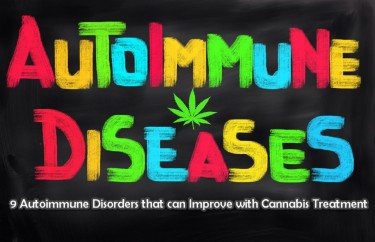Cannabis News
The Best Stoner Side Hustles to Make Extra Weed Money in 2024
Published
8 months agoon
By
admin

A Stoner’s Guide to Side Hustling
Unless you’ve been living under a rock, you know life’s gotten crazy expensive lately. It doesn’t matter if your paycheck is bigger than it used to be – everything costs an arm and a leg now. A gallon of milk will set you back more than your monthly utility bills!
With costs skyrocketing, a lot of people are looking for ways to supplement their income and bring in extra cash flow. Hey, we all like our comforts and little indulgences in life. So picking up a side hustle to fund those extras makes total sense. Plus, building up multiple income streams is how you create real wealth over time.
That’s what this article is all about – exploring three solid methods for generating supplemental income through your own entrepreneurial efforts. We’re not talking about get-rich-quick schemes here. Instead, these are techniques you can build sustainably into money-making systems to boost your bank account without killing yourself.
For all you stoners out there looking to subsidize your herb habit or just afford more of life’s finer things, we’ll dive into: 1) Using AI to create a passive income blog attached to products or ads, 2) Developing and selling your own products, and 3) Opening a brick-and-mortar Headshop. With some creativity and elbow grease, you can turn these side hustles into decent revenue streams.
We’re living in revolutionary times, folks. AI has completely transformed the playing field, ushering in a new era that most people still don’t fully grasp. I’m not exaggerating when I say this technological breakthrough is on the same level as the discovery of the internet itself.
AI has drastically reduced the effort and labor required for creating digital content and even physical products. With AI assistants, a single individual now has access to virtually infinite minds – able to tap into a vast pool of knowledge and find answers to any questions. It’s an unprecedented force-multiplier.
This democratization of AI means that anyone with a smartphone and internet connection theoretically has the ability to build a viable business in a relatively short timeframe. The barriers to entrepreneurship have never been lower when you can leverage AI to augment your skills and efforts.
Whether you want to write a book, launch a product, start a YouTube channel, or spin up an e-commerce store – AI can accelerate and empower you to make it happen as a lean, nimble solopreneur. You don’t need a huge team, millions in startup capital, or special expertise in every area. AI fills those gaps.
The enterprising folks who recognize this paradigm shift and start putting AI to work building their own business ventures will be the ones surfing the new wave of opportunity. If you’re still just going to a 9-to-5 without any irons in the fire, you’re already falling behind the curve.
In this AI-powered era, not building something of your own design – a source of self-directed income and a path toward financial freedom – means watching the world pass you by. This is the Renaissance 2.0, and AI entrepreneurs will be the pioneers and leaders. Don’t get left behind.
Can you still make money from blogging in 2024? Absolutely! The problem is most people simply don’t understand how to properly monetize a blog. Well, I’m here to tell you that blogging remains one of the easiest and most reliable ways to build a passive income stream. While I won’t dive into all the nitty-gritty details, I’ll provide the general path to take your blog from zero to cash flow in around 6 months to a year.
There are a few key things to keep in mind when starting a money-making blog: niche selection, content quality, posting frequency, traffic acquisition, and monetization analytics. Let’s break it down:
Niche – You’ll want to find a topic that intersects your personal interests and passions, but is also a proven “money niche” where people spend cash. Sports, for example, is generally a lucrative area of focus. But “sports” alone is too broad – you’d want to niche down further to something like “golfing.” The more specific and niche you get, the more you can realistically monetize. Just know that richer niches also tend to have more competition.
Content Quality – While AI can simply spit out generic articles on any topic, that low-quality output won’t draw an audience. Instead, use AI as an assistive tool while you provide the unique ideas, perspective, and editorial oversight. Come up with interesting angles, flesh out your outline, then collaborate with AI to craft share-worthy, media-rich content that you’d genuinely want to read yourself.
Frequency – Consistent publishing is less critical if you’re delivering ultra high-quality content that provides immense value. Still, try to post new longform content (1,000-2,000 words) at least once or twice per week. Quality over mediocre quantity.
Traffic – Paid advertising is the easiest way to drive traffic to your blog. But you don’t want to rely solely on that from the start. Build an initial audience for free via social media (Instagram, Facebook, Twitter, etc.), video platforms like YouTube, sites like Reddit, and other online communities. Test content in these free channels first – if posts get solid engagement, then invest in promoting them as ads.
Monetization & Analytics – Once you have steady traffic, that’s where you can leverage your audience to make money through channels like affiliate marketing, brand sponsorships, banner ads, and more. Cannabis brands, for instance, have very few options to advertise online – so a high-traffic cannabis niche blog could earn thousands per month on autopilot from banner ads alone.
If you’re on a bootstrapped budget, I recommend spending only what’s needed to buy a domain and set up a basic blog. Use free email marketing tools to start building your list. Concentrate your effort on producing stellar content over many months. Once you’ve built up a loyal following and consistent traffic, connect your blog to something like Google AdSense to start monetizing. With diligence, your passive income blog could be earning a substantial side revenue within 6-12 months.
This option for generating income gives you more control over your revenue stream, but it’s also more difficult to execute. Building a successful digital product requires deeper marketing knowledge, demographic research skills, payment processing setup, tax considerations, and more.
There’s a lot involved in product development, but if you can create something that solves legitimate problems for people and makes their lives better or easier in some way, you’ve got a potential winner on your hands. The keys are ensuring your product is practical, accessible, and truly beneficial.
When developing digital products, keep these factors in mind: It should solve a real, widespread problem that your target audience experiences. Ask yourself – does it make their lives more convenient or fulfill an unmet need or desire? The more urgent and universal the problem you’re solving, the bigger the potential market. Accessibility is also critical – your product needs to be straightforward for anyone to access and use with little friction.
So what types of digital products might you develop? If you’re pursuing the blogging option to build a topical brand, some straightforward products could include ebooks, branded merchandise like t-shirts or phone cases, online courses, or membership sites. While you might not traditionally think of them as “products,” those are absolutely digital products you can package and sell.
The beauty of digital products is that you have infinite inventory available at essentially zero marginal cost. Once created, you can sell unlimited copies without any restocking fees or additional production costs. Theoretically, this allows for infinite revenue potential.
The biggest challenge in product development is generating consistent sales. You’ll need a solid marketing strategy and sales funnel in place from the very start, along with advertising budget to promote your offers to the right target audiences across the channels they frequent.
To get started, select your niche, identify the core problems or challenges that your prospective customers face, and examine how current solutions may be falling short. See if you can create something superior that better addresses those unmet needs in an exciting new way. Solve a tight, specific problem that plagues your audience, and they’ll open their wallets for your product.
Digital products also allow creative pricing and partnership models. You can enlist affiliates to promote your product for a revenue share. Or build in continuity with recurring subscription models for products like membership sites or software. You can even bundle products together into higher-perceived-value packages.
The keys are diligent research to validate demand, innovative problem-solving to create something valuable, and intelligent marketing to get your stellar product in front of the right buyer audiences. Do that, and you’ve got a turnkey system for generating digital income.
Option 3: Start a Headshop
I can’t tell you how many people I know that started with a small headshop in a small market, and after a few years are rolling in money. The truth of the matter is that headshops for the most parts, are perfectly legal avenues of making money.
Many of my friends have started with as little as $200 and over the course of a few years built their shops to be generating thousands of dollars per day. Of course, this side-hustle can easily become a full time thing, but if you’re a stoner looking to make some extra cash, here’s how you can do it.
When asking ChatGPT on how one would start a headshop with $100 this is what it had to say:
Starting a headshop with just $100 is a challenge but not impossible, especially if you approach it with creativity and strategic planning. The key is to start small, focus on high-margin items, and gradually expand your inventory and customer base.
Here’s a step-by-step guide:
-
Market Research
-
Identify Your Niche: Understand what specific products are in demand within your local area or the online community you aim to serve. Are customers looking for smoking accessories, CBD products, or something else?
-
Know Your Competition: Identify what they’re doing well and what gaps you can fill.
2. Legal Considerations
3. Initial Product Purchase
With $100, your initial purchase must be very strategic.
Focus on items that are:
-
High Margin: Small, inexpensive items that can be sold at a higher markup.
-
Popular & Fast-Selling: Rolling papers, lighter accessories, small glass pipes, or CBD gummies can be a good start.
-
Directly From Wholesalers: Buying directly from manufacturers or wholesalers can cut down costs.
4. Sales Platform
-
Start Online: Avoid the overhead of a physical store by starting with an online shop. Use free or low-cost e-commerce platforms like Shopify or Etsy to set up your shop.
-
Social Media Marketing: Use social media platforms to market your products. This is where your market research on your target audience comes in handy.
5. Customer Engagement & Feedback
6. Reinvest Profits
-
Expand Your Inventory: Gradually add more products based on customer demand and feedback.
-
Marketing: Invest in more targeted advertising (Facebook ads, Google AdWords) as you start to generate revenue.
I think everyone should be working on a side hustle in this capacity. A.I allows you to write like a copywriter, design like a graphic designer, and research like a master if you know how to ask it the right questions.
These days, the age of solopreneurs is very possible with an army of A.I bots behind them. In this article I provided three solid ways to generate money, more than 90% of you will do nothing about it, but for the brave few who will begin their venture…I hope this served you well!
Make some bank stoner!
EXTRA IDEAS, BE A CANNABIS COACH, READ ON…
You may like
Cannabis News
The Latest in DEA Shenanigans? The Federal Agency Punts Marijuana Hearings into 2025
Published
30 minutes agoon
November 23, 2024By
admin

For the past few months, cannabis advocates have been perched on the edges of their seats like cats watching a laser pointer, following every twist and turn of the great rescheduling saga. Ever since President Biden sparked this joint of hope, suggesting that cannabis could be moved from Schedule I to Schedule III, we’ve been waiting to see if the DEA would finally admit what we’ve known all along – that cannabis isn’t as dangerous as heroin.
But just as we thought we might get some clarity before the 2024 election circus kicks into high gear, the DEA pulled what I like to call a “classic prohibitionist move.” A judge recently announced that the hearings won’t happen until 2025, leaving advocates frustrated and industry players wondering if this is just another delay tactic in the long game of “hurry up and wait” that we’ve become all too familiar with.
Now, I’ve been covering cannabis policy long enough to smell political theater when I see it, and this latest development has got my skepticism sensors tingling. While some view rescheduling as a step forward, others (myself included) have questioned whether Schedule III is just Big Pharma’s backup plan – a way to maintain control while appearing progressive.
In this article, we’re going to dive deep into why the DEA is dragging its feet, what this delay really means for the cannabis industry, and why true reform might need to come from the halls of Congress rather than the offices of federal agencies. Buckle up, folks – we’re about to get real about the future of cannabis reform in America.
Just when we thought the DEA might finally be ready to have an adult conversation about cannabis, they’ve pulled another classic move from the prohibitionist playbook. Administrative Law Judge Teresa Wallbaum recently announced that the hearing on cannabis rescheduling will be pushed to January 2025, citing the need for “additional time to prepare for this complex proceeding.”
Let’s be real here – this delay isn’t about preparation. It’s about waiting to see who they’ll be working with after the election. And given Trump’s recent victory, coupled with his surprisingly progressive stance on cannabis reform, the landscape is about to get interesting. Unlike the Biden administration’s tepid approach to reform, Trump has voiced support for both rescheduling and broader cannabis reforms. However, he’s also a wild card and could do absolutely nothing. It’s still too early to tell.
But here’s where I’m going to ruffle some feathers – this whole rescheduling circus might just be political theater. Think about it: the Biden administration had four years to implement meaningful cannabis reform. What did we get? A lot of promises, some nice-sounding rhetoric about rescheduling, and precisely zero actual changes. It’s the kind of empty promises we’ve come to expect from career politicians trying to maintain their grip on power while appearing “progressive.”
The American people aren’t stupid. They saw through this charade, which partly explains why they voted for Trump. Say what you will about the man, he is a big disruptor and there are more moderate voices on his team this time around. We’ll have to see who else he picks and hope that some lobbyist doesn’t sneak in there – they probably will – but we’ll have to see.
According to court documents, the delay is necessary because “the parties need additional time to identify and prepare expert witnesses, and to review the extensive documentary evidence that will be presented at the hearing.” But let’s call this what it is – bureaucratic tap dancing. The DEA is waiting to see which way the political winds blow before making any significant moves.
Here’s where I might surprise you – this delay might actually be a blessing in disguise for cannabis advocates. Why? Because Schedule III was never the answer we were looking for anyway. As I’ve written before, rescheduling to Schedule III is essentially Big Pharma’s backup plan, a way to maintain control over cannabis while appearing to support reform.
My gut tells me – and my gut’s been right more often than not in this industry – that real cannabis reform isn’t going to come through rescheduling. It’s going to come through Congress, and potentially with support from the incoming administration. The people have spoken loudly: they want real reform, not more empty promises and half-measures.
The writing’s on the wall, folks. The old guard’s strategy of dangling the rescheduling carrot while maintaining the status quo isn’t working anymore. Whether through Trump’s promised reforms or congressional action, change is coming. And maybe, just maybe, this DEA delay is the death rattle of the rescheduling red herring we never needed in the first place.
You know, I used to be that guy. The one who’d confidently declare, “Within five years, cannabis will be legal nationwide!” I’d break down the trends, cite the polling data, and explain why legalization was inevitable. And you know what? I kept being wrong. Not about the direction – cannabis reform has steadily marched forward – but about the timeline and the path it would take.
Looking back, I nailed quite a few predictions. I saw the CBD boom coming, correctly anticipated the rise of Delta-8 THC in prohibition states, and forecasted the eventual corporate takeover of many pioneer cannabis markets. But these days? Making predictions about cannabis reform feels about as reliable as using a Magic 8-Ball to plan your retirement.
The political landscape has become more unpredictable than a first-timer’s reaction to a high-THC edible. We’ve got Trump back in office – a man who, despite his previous opposition to cannabis, has recently shown support for reform. Could he shock us all and push through a simple, straightforward legalization plan just to stick it to the establishment? It’s entirely possible. Could he also do absolutely nothing and let the status quo reign? Equally possible.
And that’s just one variable in an increasingly complex equation. We’ve got Big Pharma pulling strings behind the scenes, state markets evolving at different rates, and banking reform perpetually stuck in congressional limbo. Not to mention the international scene, where some countries are embracing legalization while others double down on prohibition.
Here’s what I do know: Schedule III, even if it happens, isn’t the endgame. It’s like trying to fix a broken leg with a Band-Aid – it might look like you’re doing something, but it doesn’t address the underlying problem. The moment it passes (if it passes), it’ll be tied up in legal challenges faster than you can say “interstate commerce.” Why? Because without congressional action, we’re still stuck in this weird legal twilight zone where state and federal laws contradict each other.
So I’ve stopped making predictions about when or how cannabis reform will happen. Instead, I focus on analyzing the facts in front of us and calling out the bullshit when I see it. Because at the end of the day, that’s more valuable than crystal ball gazing.
The only thing I’m certain about is that change is coming. Whether it’s through congressional action, executive orders, or some yet-unknown path, cannabis prohibition will end. I just won’t tell you when anymore. I’ve learned my lesson about making promises I can’t keep – unlike some politicians I could name.
INSPIRATION: https://www.marijuanamoment.net/dea-marijuana-
rescheduling-hearing-delayed-until-2025-agency-judge-rules/
THE DEA DELAYS AGAIN, READ MORE…
THE DEA IS NOT TELLING THE TRUTH ON CANNABIS SCHEDULES!
Cannabis News
California Appeals Court Rejects Marijuana Grow Permit, Citing Federal Illegality
Published
23 hours agoon
November 22, 2024By
admin
In a landmark decision that highlights the tension between state and federal cannabis laws, a California appellate court ruled on October 29th that property owners can refuse to allow the transportation of cannabis across their land via easements, even when the cannabis operation is approved by local authorities.
The Second District Court of Appeal’s unanimous decision draws attention to private property rights in a context where cannabis remains federally illegal, but state law allows licensed cultivation, distribution and sale. Presiding Justice Albert Gilbert stated, “No matter how much California voters and the Legislature might try, cannabis cultivation and transportation are illegal in California as long as it remains illegal under federal law.” JCCrandall LLC v. County of Santa Barbara, Case No. B333201, 2024 WL 4599304, Oct. 29, 2024.
Unless the California Supreme Court grants review – which I would not rule out – the decision empowers private property owners to refuse to contract with cannabis businesses, and restricts local government from approving cannabis operations that implicate the property rights of neighbors who object.
The case at hand
The dispute centered around a cannabis cultivation operation in Santa Barbara County, where JCCrandall LLC challenged a conditional use permit granted by the County to its neighbor, Santa Rita Holdings Inc. The critical issue was that Santa Rita Holdings could only access its 2.5-acre cannabis farm via an unpaved road crossing JCCrandall’s property through a pre-existing easement. JCCrandall grows oats and barley.
JCCrandall’s primary concern? It raised a number of complaints with the Santa Barbara County Supervisors about truck traffic and night operations, which did not gain traction, but in the Court of Appeal JCCrandall focused on what it claimed was potential liability associated with having federally illegal substances transported across its property, even though County regulators found that the Santa Rita operation was fully compliant with state and local laws.
Key legal findings
The appellate court’s decision hinged on several crucial points:
- Property Rights: The court emphasized that “the right to exclude others is the essence of the right of property ownership” and classified it as a fundamental vested right.
- Federal Supremacy: The panel determined that allowing cannabis transportation across private property “defies the Supremacy Clause” of the U.S. Constitution.
- State vs. Federal Law: While cannabis might be legal under California law, the court ruled that federal law’s prohibition takes precedence in this context.
California cannabis industry implications
Legal experts suggest this ruling could have far-reaching consequences for California’s cannabis industry. Section 1550.5(b) of the California Civil Code makes contracts within California involving cannabis lawful and enforceable, and Santa Rita Holdings bet the ranch on that argument. But the Court of Appeal held that the statute could not compel a landowner to allow cannabis to travel across its property on a pre-existing easement. Licensed operators may find it harder to do business because neighbors who have property rights affected by a cannabis business can object, and, under the JCCrandall ruling, local government must yield to those objections.
An example might be a cannabis dispensary that depends on access to its parking lot via an easement or is located in a shopping center where other lessees have rights to object to tenants notwithstanding the approval of the landlord. In cultivation, many cannabis farms depend on vehicular access through easements because they are remote and do not always have direct access to public thoroughfares, or they depend on water sourced from other properties pursuant to agreements made by prior owners who grew traditional crops. These neighbors might not need to show any negative impact on their property, but can argue that they could be found complicit in federally illegal activities.
I think the most problematic language in the JCCrandall ruling is the following, which might draw the attention of the California Supreme Court and cause it to grant review: “For as long as an easement is enjoyed, its mode and manner of use shall remain substantially the same as it was at the time the easement was created. The County argues the easement was used for agricultural purposes. But there is a vast difference between legal and illegal agricultural purposes.” (Emphasis added.) If California has determined that cannabis cultivation is legal – as it has – and state courts routinely enforce contracts involving cannabis, it is a pretty bold step to declare the use of a lawful pre-existing easement illegal simply because the agricultural crop is cannabis and take away easement access from Santa Rita.
Looking ahead
This decision creates new challenges for cannabis businesses in California, and will result in more disputes among neighbors. While the Biden administration has shown signs of easing federal marijuana restrictions, this ruling demonstrates that the federal-state law conflict continues to create significant legal hurdles for the cannabis industry.
California court decisions also can be persuasive authority in other states, so we might see similar litigation (and decisions) elsewhere in the country where cannabis has been legalized.
The case serves as a reminder that despite California’s progressive stance on cannabis, federal prohibition continues to cast a long shadow over the industry’s operations and development. As the cannabis landscape continues to evolve, this ruling may prompt businesses to reassess their property arrangements and local governments will certainly have to reconsider their permitting processes to give more careful consideration to objections by neighbors who claim that their property rights are implicated by cannabis operations.
Note: This post was first published earlier this month on the Alger ADR Blog.
Cannabis News
Autoimmune Conditions Are Rising Fast in American Medicine, Can Cannabis Help?
Published
2 days agoon
November 21, 2024By
admin

Why Are Autoimmune Conditions On The Rise? And How Cannabis Can Help
Autoimmune diseases refer to a group of medical conditions that occur as a result of the immune system attacking your own tissues.
In a normal human body, the immune system is responsible for protecting the body by producing antibodies that prevent toxins, cancer cells, and viruses from harming the body. However, when one is struck by an autoimmune disorder, the immune system is no longer able to distinguish the difference between dangerous cells and healthy cells. As a result, the healthy cells are attacked, too.
Today, we know of around 100 different kinds of autoimmune conditions. Some of the most common examples of autoimmune conditions include rheumatoid arthritis (RA), lupus, inflammatory bowel disease, celiac disease, Type 1 diabetes, multiple sclerosis (MS), and the Guillain-Barre syndrome (GBS) to name a few. Others include Graves’ disease, Hashimoto’s thyroiditis, psoriasis, and vasculitis.
According to the National Health Council, around 50 million Americans are affected by autoimmune diseases today. This is a conservative estimate, considering that several autoimmune conditions are tricky to treat and so many people go undiagnosed for long periods of time. It’s worrisome to note that there are more people developing autoimmune diseases these days, many of which have reached levels comparable to epidemics.
But cannabis can help!
How Cannabis Can Help Curb And Manage Autoimmune Diseases
Not one single cause is responsible for the alarming growth of autoimmune diseases, though there are several factors at play. While there isn’t just one cause we can point at, it’s certain the reasons lie in our environment. After all, human genetics haven’t changed significantly yet the chemicals, toxins, and pollutants in our food and everyday items have risen dramatically.
In addition, people are getting less sleep than ever; stress rates are through the roof, and people are constantly worried. There is a clear link between psychological stress and physical health as well as immunity, which is why it isn’t unusual – it’s even common – to see many autoimmune disease cases flare up after people experience severe stress caused by grief, an accident, job loss, or the death of a loved one. These highly stressful and traumatic conditions wreak havoc on the body’s immune response, causing inflammation all over the body.
Conventional treatments prescribed to treat autoimmune conditions are focused on taming inflammation; these usually include steroids but also some non-steroidal drugs. These drugs often come with unwanted side effects, but research has shown that cannabis can work with the endocannabinoid system through THC and CBD, as well as other cannabinoids, to simulate similar results. In one study for example, we can see the clear association of the endocannabinoid system for neurodegenerative and inflammatory processes seen in Multiple Sclerosis and Amyotrophic Lateral Sclerosis.
There has also been an increasing number of studies proving the efficacy of cannabis for treating several autoimmune conditions.
Cannabis For Multiple Sclerosis
Multiple sclerosis is one of the autoimmune conditions where a growing number of studies have come out supporting the therapeutic benefits of cannabis for. In a 2024 study, patients with multiple sclerosis reported several improvements in quality of life after using cannabis-based medical products (CBMPs). For the study, British investigators analyzed the impact of cannabis based medicinal products made from either oil or extracts in 141 patients who were enrolled in the UK Medical Cannabis Registry.
The researchers then analyzed the changes in patient outcomes after a month, then three and 6 months after. According to the patients themselves, they were able to sustain improvements in their mental and physical health after marijuana therapy.
“This case series demonstrates a potential association between the initiation of CBMPs and improved patient reported outcomes in sleep, anxiety, and general HRQoL [health-related quality of life] measures, over six months,” said the study authors. “Additional measures for HRQoL, including various physical and mental health subdomains, also exhibit improvements up to six months when compared to baseline,” the authors concluded.
In another study from 2023, patients with multiple sclerosis reported significant improvements in symptoms after cannabis use. For the study, researchers from the Dent Neurologic Institute in Buffalo, New York, analyzed the medical records of 141 patients with multiple sclerosis, who were also legally authorized to consume medical marijuana products. They then analyzed data from the patients after one up to 4 follow-up sessions after the initial session of cannabis therapy. Sixty-five percent of patients consumed 1:1 THC:CBD tinctures.
According to the authors: “The results of this study indicate that use of MC [medical cannabis] to alleviate symptoms of MS is largely efficacious, with improvement in pain (72 percent of patients), muscle spasticity (48 percent of patients), and sleep disturbance (40 percent of patients) frequently reported.”
“More than half of opioid users at baseline were able to either discontinue or decrease their opioid use after starting MC. The mean daily MME [morphine milligram equivalents] was significantly reduced from the initial visit (51 mg) to the last follow-up visit (40 mg). This is consistent with previous literature showing that MC legalization is associated with decreased opioid use and that MC use is associated with decreased opioid use in patients with chronic pain. These findings indicate that MC may represent an alternative analgesic to opioids for some patients,” they wrote.
Anecdotal Evidence
While more studies are needed to determine cannabis’ effect on other autoimmune conditions such as rheumatoid arthritis, we can rely on anecdotal evidence. In 2020, data from the medical journal, Rheumatology, revealed that patients who have this condition, along with those who have lupus and fibromyalgia, consume cannabis.
In fact, it was reported that marijuana was extremely common especially for patients with fibromyalgia. “In this meta-analysis, we found that one in six patients suffering from rheumatologic disease actively consumes cannabis, reducing pain reduction… A favorable effect of cannabis on pain in our meta-analysis reinforces the idea that cannabis could be used for analgesic purposes,” the authors concluded.
Conclusion
Cannabis is a safe and natural way to help prevent and treat the symptoms of autoimmune disease. It targets inflammation at its root, and is a proven natural way to help cope with stress, pain, insomnia, and inflammation all while protecting the brain. However, it’s important to ensure you medicate with clean, organic sources of marijuana.
AUTOIMMUNE AND CANNABIS, READ ON…

The Latest in DEA Shenanigans? The Federal Agency Punts Marijuana Hearings into 2025

Dutch police find gnome made of MDMA during drug bust

Rejected applicants sue Minnesota over marijuana social equity licensing process

4 Ways Marijuana Can Help You Have A Better Thanksgiving

Can Big Alcohol Help The Cannabis Industry

California Appeals Court Rejects Marijuana Grow Permit, Citing Federal Illegality

Expert Lighting Tips For Successful Indoor Growing Weed

Acne And CBD: Exploring Alternative Dermatological Solutions

Can I Gift Marijuana This Holiday Season?

The Best Cocktails For An Easy Festive Thanksgiving

Distressed Cannabis Business Takeaways – Canna Law Blog™

United States: Alex Malyshev And Melinda Fellner Discuss The Intersection Of Tax And Cannabis In New Video Series – Part VI: Licensing (Video)

What you Need to Know

Drug Testing for Marijuana – The Joint Blog

NCIA Write About Their Equity Scholarship Program

It has been a wild news week – here’s how CBD and weed can help you relax

Cannabis, alcohol firm SNDL loses CA$372.4 million in 2022

A new April 20 cannabis contest includes a $40,000 purse

Your Go-To Source for Cannabis Logos and Designs

UArizona launches online cannabis compliance online course
Trending
-

 Cannabis News2 years ago
Cannabis News2 years agoDistressed Cannabis Business Takeaways – Canna Law Blog™
-

 One-Hit Wonders2 years ago
One-Hit Wonders2 years agoUnited States: Alex Malyshev And Melinda Fellner Discuss The Intersection Of Tax And Cannabis In New Video Series – Part VI: Licensing (Video)
-

 Cannabis 1012 years ago
Cannabis 1012 years agoWhat you Need to Know
-

 drug testing11 months ago
drug testing11 months agoDrug Testing for Marijuana – The Joint Blog
-

 Education2 years ago
Education2 years agoNCIA Write About Their Equity Scholarship Program
-

 Cannabis2 years ago
Cannabis2 years agoIt has been a wild news week – here’s how CBD and weed can help you relax
-

 Marijuana Business Daily2 years ago
Marijuana Business Daily2 years agoCannabis, alcohol firm SNDL loses CA$372.4 million in 2022
-

 California2 years ago
California2 years agoA new April 20 cannabis contest includes a $40,000 purse






